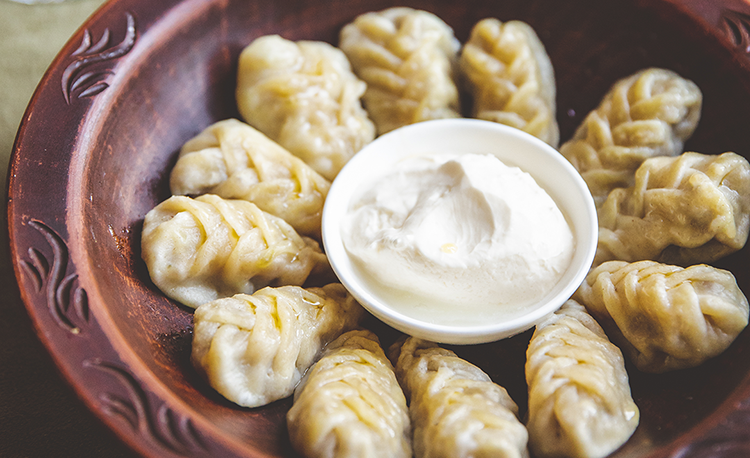Saudi dishes from granny’s kitchen, Like areekah dish.
Saudi culinary culture consists of a welcoming variety of food that people eat throughout the month of Ramadan; with each area having something different to offer. Here are some of the specialties from around the Kingdom:

SALEEG TAIF
An Arabian version of risotto, Saleeg is a creamy rice dish cooked with broth and served with meat or chicken and duggus- a spicy tomato salsa. It makes a great iftar and is a bowl of comfort at any time of the day. To add an extra flavor, the broth is served alongside for a tasty drink to sip on or pour on your rice; making it incredibly nourishing, comforting, and delicious.
THAREED ALAHSA
Known for being a light, yet filling meal, thareed is one of the very popular dishes during Ramadan.
Thareed is a healthy stew with balanced ingredients including meat, vegetables, and delectable Arabic spices served over ragag (thin crispy bread) that soaks up all the rich juices.This satisfying stew is made with lamb, chicken, or just vegetables.
 AREEKAH ASIR
AREEKAH ASIR
areekah food , Made with a handful of nutritious ingredients, this dish comes together in a bowl and leaves you satisfied all evening.
Areekah is a warm casserole baked from both white and brown flour, honey, and ghee. When the dough is smooth and ready for serving, it›s transferred into a bowl and a small well is created that allows a generous drizzle of ghee and honey to pool perfectly in the middle.
read also:Food Trippin’
MAFROOKAH TABUK
Mafrookah is a traditional dish of Tabuk made with saj bread (unleavened Arabic flatbread) by crumbling it with ghee, dates or honey.
Traditional Mafrooka is made by hand using only three ingredients. Also this sweet is healthiest and most delightful when the ghee is made at home. Mafrookah is enjoyed a lot in Ramadan as an indulgent iftar snack.

KLEIJA AL QASSIM
A traditional stuffed biscuit, Kleija originates from the date rich province of Qassim. It’s made with a specific wooden mold to shape the dough into patterned disks.
Originally stuffed with a smooth date paste, it›s also stuffed with aromatic nut-sugar filling such as walnut, cardamom and sugar or coconut and sugar. A meal on its own, it›s wholesome, filling, and totally worth every bite!
LAHOH
JAZAN
Lahoh (also spelled lahouh) is a sourdough flatbread, slightly spongy in texture. It›s made by mixing wholewheat flour, yeast, salt, and water and then allowing the batter to ferment for two to three days to develop the flavor. Eaten warm right off the griddle with butter, honey or yogurt, it’s also eaten with savory stews and soups.
KOBAYBA HAIL HAIL
Kubbayah Hail refers to the stuffed grape leaves that is a Ramadan favorite in Hail. It›s made with grape leaves that are stuffed with a herby rice mix, rolled and boiled until tender. These deliciously tender bites are served as an appetizer or a main course.
read also:The Best of Riyadh’s Street Food
 MASABEEB RIYADH
MASABEEB RIYADH
Masabeeb, popularly known as the Saudi pancakes are delightfully tasty. Made with hearty whole wheat flour, milk powder, yeast, drizzled with honey, and not much else. Simple, wholesome, and satisfying.
Masabeeb is little Saudi pancakes formed by pouring a yeast-based batter into a pan. Delightfully tasty with hearty ingredients like whole wheat flour, milk powder, drizzled with honey, and not much else. They are particularly popular during Ramadan and other holidays and loved because of being simple, wholesome, and satisfying tiny snacks.
 MANTO AND YAGHMESH JEDDAH
MANTO AND YAGHMESH JEDDAH
This fluffy and soft textured goodness is a Hijazi version of dumplings. The wheat dough wrappers, with a silky mouthfeel, is stuffed with a well-balanced meat or vegetable filling and topped with hot sauce and spices.
The Manto dish is steamed while the baked or pan-fried version is called Yaghmesh; both shaped either round, crescent-shaped, or purse-shaped.
FUL AND TAMEEZ MAKKAH
Ful is a culinary ritual across the kingdom, but it›s eaten in Makkah more often during Ramadan. Known for being an Egyptian breakfast dish, the fava bean stew is prepared by mashing the beans and flavoring it with onions, garlic, lemon juice, and olive oil.
Coriander and tomato, the Ful is scooped up with freshly baked tameez (pita bread). It›s usually served as part of an elaborate iftar spread; a filling meal that’ll leave you satisfied.











